
Arquivo para a ‘Information Science’ Categoria
The veiling of knowledge, night of thought ’
Arrábida’s Charter of Transdisciplinarity, written by the physicist Nicolescu Barsarabi,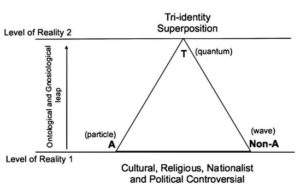 the Portuguese serigraphist Lima de Freitas and Edgar Morin, points out the process (prior to the Web), where excessive specialization and an impoverishment of Being created a veiling of thought, says the letter :
the Portuguese serigraphist Lima de Freitas and Edgar Morin, points out the process (prior to the Web), where excessive specialization and an impoverishment of Being created a veiling of thought, says the letter :
“… The contemporary rupture between an increasingly accumulative knowledge and an increasingly impoverished inner being leads to the rise of a new obscurantism, whose consequences on the individual and social level are incalculable.” (Arrábida, Portugal, 1994).
The problem then is how to create a knowledge that unites and a worldview that expands the impoverished and brutish human spirit, according to Morin’s own recipe: “it is necessary to replace a thought that isolates and separates with a thought that distinguishes and unites”.
All polarization and barriers between different thoughts are the root where dialogue is ignored, even if sometimes stated, the semantic closure of thought, whatever the principles and often moral, religious and even cultural are important, must exceed the pre-conceptions (in sense of Gadamer) and meet the positive in the Other.
The Letter of Arrábida says in article 14: “The opening involves the acceptance of ignorance, the unexpected and the unpredictable. Tolerance is the recognition of the right to ideas and truths contrary to ours ”, this is the meaning of replacing a thought“ that isolates and separates ”with another that“ distinguishes and unites ”, having a difference does not mean isolating or even separating.
It is the totalitarian idea of the single truth, even if religious, pragmatic or scientific, that often isolates and does not unite, in grounded dialogues there are always new elements to be considered and rarely are they properly heard and respected.
Physicist Barsarab Nicolescu, one of the signatories to the Arrábida Charter, in his own Charter of Transdisciplinarity, regarding quantum physics wrote: “… where does this blindness come from? Where does this perpetual desire to do the new with the old come from? The irreducible novelty of quantum vision continues to belong to a small elite of leading scientists ”, although the physical reality proves and surprises it.
Barsarab said in that his Manifest about “reality”, “In our century, Husserl and some other researchers, in an effort to question the foundations of science, discovered the existence of different levels of perception of Reality by the observing subject”, more than that the observer is part of the experiment, of the whole, and is not neutral.
All of our logic and actions are based on three axioms: The axiom of identity: A is A, The axiom of non-contradiction: A is not non-A; and the third is called the axiom of the excluded third: there is no third term T (T for “included third”) that is both A and non-A.
What Nicolescu says is what would happen if we became the included third, that’s what Stefan Lupascu (1900-1988) did when creating the logic of the included third (tertium non datur), including the T-state that is neither “current” nor “potential”, they replace the classic logic of “true” or “false”, and create a more generalized level that includes physics, epistemology and what is “consciousness”.
NICOLESCU, Barsarab. Transdisciplinarity and Complexity : Levels of Reality as Source of Indeterminacy. Available in: https://ciret-transdisciplinarity.org/bulletin/b15c4.php access: July 2020.
Tribute to Edgar Morin, 99 years old
July 8, 2020 Edgar Morin turns 99 years, with an impressive lucidity, recently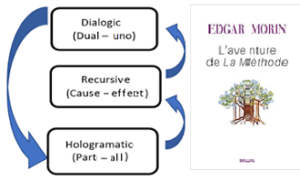 described the current pandemic as: “We have to learn to accept them and live with them, while our civilization has installed in us the need for certainties each time bigger about the future, often illusory, sometimes frivolous ”, the same frivolity that Peter Sloterdijk states:“ In this frivolous sphere, we thought we were able to control nature with sophisticated technology, but the virus brought us to our knees. Will our way of being in the world change?”.
described the current pandemic as: “We have to learn to accept them and live with them, while our civilization has installed in us the need for certainties each time bigger about the future, often illusory, sometimes frivolous ”, the same frivolity that Peter Sloterdijk states:“ In this frivolous sphere, we thought we were able to control nature with sophisticated technology, but the virus brought us to our knees. Will our way of being in the world change?”.
Of Sephardic Jewish origin (Jews who settled in the Iberian peninsula), with the original name of Edgar Nahoum, was born on July 8, 1921 in Paris, his father Vidal Nahoum was a merchant from Salonica (the former Thessalonica), and his mother Luna Beressi, passed away when she was 10 years old, adopted the code name Morin during the French resistance struggle and remained.
In 1978 she married Edwige Lannegrace, to whom she dedicated the book Edwige, the Inseparable (2009), after her death in 2008, about him, she said a sentence by Montaigne: “It was him, it was me”.
He is currently married to the 61-year-old Moroccan sociologist Sabah Abouessalam.
He wrote 1956, Le Cinéma or l´Homme Imaginaire, Minuit, Paris. In Portuguese: Cinema or the Imaginary Man. Lisbon: Relógio d’Água Editores, 1997, had previously written Year Zero of Germany (1946) and Man and Death (1951).
Among other books, the second book of great impact is The Lost Paradigm – for a new Anthropology, Zahar, Brazil, 1979. (French edition of 1973).
But his great work will be the six volumes of Method 1, the first “The nature of nature” publishing in 1977, the second of Method 2, “The life of life” (1980), Method 3 “The knowledge of knowledge” ( 1986), Method 4 “Ideas: habitat, life, customs and organization” (1991), Method 5 – humanity of humanity: human identity (2001) and Method 6: Ethics (2004), the years adopted are from the original French editions.
In total he published more than 30 books, in 1983 he held a debate in Lisbon where he put “The epistemological problem of complexity” which became a book in 1985 published by the publisher Europa América Portuguese.
His central ideas in addition to the problem of complexity are the return to the human (which is called the lost paradigm), the transdisciplinary thought present in almost all of his work and was a signatory of the Letter of Transdisciplinarity of Arrábida by the serigraphist painter Lima de Freitas, for him, the physicist Nicolescu Barsarabi, written in 15 synthetic articles, where we highlight:
“ … singly accumulative knowledge and an increasingly impoverished inner being leads to the rise of new obscurantism, whose consequences on the individual and social level are incalculable.” (Arrábida, Portugal, 1994).
In 1985 he wrote “The epistemological problem of complexity” (Europa America, 1985), which was conceived from a debate held in Lisbon, in December 1983.
The essence of his thinking about complexity can be thought of in three new concepts, among them: the dialogical operator (understood differently from the dialectic operator), the recursive operator (which means to understand the consequences of the acts, in a continuous cause-effect relationship because the effect produces a new cause) and the holographic operator (the part is in the whole and the whole is in the part, so do not separate the part from the whole).
So we must unite separate things, namely: reason and emotion, sensitive and intelligible, real and imaginary, reason and myths, and, science and art, another essential thing is to consider that we are 100% nature and 100% culture, the old nature paradigm X culture that philosophy asks about what we are, from contractualists, through evolutionists to socio-Marxists (wrote My left), Morin answers in a new way (from Pena-Veiga: The ecological awakening: Edgar Morin and ecology complex).
He has many questions about our future, the following lecture explains this dramatic moment, that the pandemic can demonstrate that this is how we should perceive it.
https://www.youtube.com/watch?v=V3t7UFTpDHE
Knowledge needed for the future
It was Edgar Morin who found the masterful way or veil over knowledge, its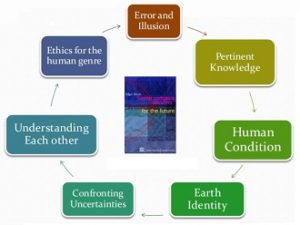 errors and illusions, to interrupt knowledge in its principles, which is expanded in another book that talks about “global flavors and local flavors: the transdisciplinary look” (2008) .
errors and illusions, to interrupt knowledge in its principles, which is expanded in another book that talks about “global flavors and local flavors: the transdisciplinary look” (2008) .
“The seven knowledge necessary for the education of the future” (Morin, 1999) affirms this paradox that in search of knowledge embedded in illusions and errors, it affirms in the first chapter, while no second presents a gap that knowledge teaches is “not pertinent” to the student, that is, the fact that he shows within a disciplinary process that should be displayed as a whole.
The third saber is to indicate human identity, to comment on the part is curious and to speak so much about identity without mentioning the social complex in which we live as a “species” that must identify as such (from identity), perhaps the great paradigm of humanism , today in question.
This will send in chapter 4, which is the earthly identity, which lies in the importance of understanding that the disciplines (areas of specialties) must converge to a human condition, and it leads to human understanding, once in school it should be used as “ understand each other ”.
The fifth saber refers to dealing with uncertainties, students can consider a great paradox when dealing with mysteries, since a school school only dedicates to dealing with conceptual and scientific certainties, and life is always a surprise.
The sixth (and 6th. Saber) chapter involves understanding, which comes from the earthly condition, the globalization process that started with the colonization of America in the 16th century and had complex consequences (ideological, economic, social, etc.) and this must be taking us to a planetary condition.
The seventh chapter involves the ethics of mankind, he names it as an anthropo-ethics (Sloterdijk goes further and says an anthropotechnique is necessary, but falls outside this scope), the importance of citizenship in society (in Homeland-Earth goes beyond and proposes citizenship planetary) where a social conscience is needed.
Tomorrow he will be 99 years old and we are thinking of a special post for this lucid educator and thinker.
MORIN, E. (1999) Seven complex lessons in education for the future. UNESCO Pub. Available PDF.
http://www.ideassonline.org/public/pdf/Sevencomplexlessonsineducation.pdf
The pandemic plateau remains
The data observed in the last week of deaths by the corona virus, which are reliable data, since the curve of infected people depends on testing, which is done by companies and is still low, indicate that the plateau remains and the pandemic is internalized in the Brazil (see graph), we have already stressed the importance of making the logarithm to better visualize the slope of the curve, which is exponential.
data, since the curve of infected people depends on testing, which is done by companies and is still low, indicate that the plateau remains and the pandemic is internalized in the Brazil (see graph), we have already stressed the importance of making the logarithm to better visualize the slope of the curve, which is exponential.
What the policy would be for this moment is to continue maintaining social isolation, personal hygiene, and social distancing habits, in addition to precautions in relation to municipal policies.
Any prospect of a peak, at least the data indicates, seems meaningless, the number of infections remains around a thousand daily deaths, and a #lockdown is no longer viable, as the virus has already spread and regional isolation does not mean pandemic control.
We will navigate through uncertainties, already tired of a long period of isolation and with an open and close policy that does not have much effective results, except to contain a greater contagion, without meaning any effective result of controlling the pandemic at the federation level.
The economic costs that would be great in the case of a #lockdown period, will now be higher because both the commerce and the services that effectively need face-to-face contact would not be justified to keep them disabled, and few services are non-essential.
The plan is to continue the so-called “social isolation”, whose more certain name in the Brazilian case we have already said, is “social distance” which is compatible with some open services.
The essential is therefore to maintain personal care and hope that the curve falls “naturally”.
Innocence, naivety and ignorance
In many situations we stumble on these three concepts as synonyms or close ones, they are not, a child is innocence and does not know many subjects, but he is not ignorant, for his naivete he must be protected both by his parents and by any person of good character.
they are not, a child is innocence and does not know many subjects, but he is not ignorant, for his naivete he must be protected both by his parents and by any person of good character.
An adult can also be innocent in a certain situation because he was not part of or did not know a serious situation, he is not ignorant, but innocent even though some harm may have occurred due to his ingenuity in not realizing the seriousness or the consequences of an act.
Ignorance is militant, that is, even seeing and understanding the seriousness of a given situation, a conscious voluntary action commits or allows a serious act to be carried out, and some or many people or even serious situations can occur.
The pandemic exposed these three realities and one cannot fail to notice a disease with the severity of taking lives and whose defense is complex due to the lack of knowledge about the action and control of the coronavirus implies making decisions in defense of life that mitigate the number of deaths.
Just as it exposes the naivety of many people who do not take care of hygiene and prevention to minimize the contagion, exposing innocent people, but it is ignorance that worries most and can cause even more serious situations if it is not possible to stop neglect. Ignorance was used in history to manipulate innocent populations and often managed to lead many naive people to catastrophic situations, striking innocents and often leading to death and despair, this happened in wars and pandemics, the Spanish flu in the 1918s and 1919 killed 50 million people, an absurd number for the population at the time.
The biblical revelation in which the apostle Matthew (Mt 11.25) states that it was his father’s pleasure to reveal himself to the little ones and to hide the divine truths from the “wise and understanding”, must be understood in the context of belief in God.
God eternal knowledge and not about knowledge and temporal truths, because the following text is very clear (Mt 11: 26-27): “Yes, Father, because that was your pleasure. Verything was delivered to me by my Father, and no one knows the Son, except the Father, and no one knows the Father, except the Son and the one to whom the Son wants to reveal him.
Using this passage to justify or defend ignorance is bad faith, in both senses, in the religious and in the moral sense.
It is not a cIt is not a crisis of thought alone
The crisis may seem like something too intellectual, thinking would be far from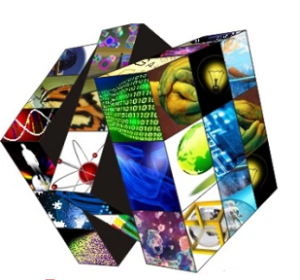 the concrete reality of science, and thus from ordinary life, but its extension reaches the everyday science from statistics to medicine, from bibliometrics to biology and this can affect confidence in science and in In the spiritual field there is an immense openness to quackery and the manipulation of good faith.
the concrete reality of science, and thus from ordinary life, but its extension reaches the everyday science from statistics to medicine, from bibliometrics to biology and this can affect confidence in science and in In the spiritual field there is an immense openness to quackery and the manipulation of good faith.
This criticism questioned, for example, the fact-value dichotomy, emphasizing the social construction of facts, and can be traced back to the works of philosophers like Friedrich Nietzsche and Edmund Husserl, with their rejection of science as a metaphysical substitute.
Stephen Toulmin was very articulate in his criticism of the Cartesian idea of rationality (1958), while the essence of the scientific method has been the subject of writings (and disputes) by authors such as Karl Popper, Thomas Kuhn, Paul Feyerabend and Imre Lakatos.
The essence of the scientific method has been the subject of writings (and disputes) by authors such as Karl Popper, Thomas Kuhn, Paul Feyerabend and Imre Lakatos, the echo of these disputes reaching the world of physics as the debate about string theories and their physical reality.
An interesting literature on the current crisis was the work of Derek of Solla Price “Little Science, Big Science” of 1963, he states that there is a point of saturation and senility, which was the result of the exponential growth he experienced in the 20th century.
Another more interesting work is the book by Jerome Ravetz “Scientific knowledge and its social problems”, which offers a critique of the myths of objectivity (it is our main object of this blog), and which asks about the solution of practical problems, that is , social.
In a recent work he recently argued Ravetz (2016) that “Applying a” scientific “methodology to science governance tasks leads directly to corruption, as any system can be at stake”, in another article, Ravetz (2011) defines the issue in terms of the “maturation of the structural contradictions of modern European society”.
The pandemic showed the inefficiency of both the medical field where “specialists” defend medicines that have not been proven effective and generate collateral problems, such as hydroxychloroquine and others (according to the magazine Veja (in section Saude), 69 medicines are tested: 18 are anticancer, 14 immunosuppressants, 13 antihypertensive drugs, 12 antiparasitic drugs and 12 anti-inflammatory drugs, and statistical treatment also hide the real results, as are the analyzes of the evolution of the pandemic in Brazil
References:
De Solla Price, D. J. (1963). Little science big science. Columbia University Press.
Ravetz, J. R. (1971). Scientific knowledge and its social problems. Oxford University Press.
Ravetz, J. (2008). Faith and reason in the mathematics of the credit crunch. The Oxford Magazine. Eight Week, Michaelmas term 14–16, Available online at http://www. pantaneto.co.uk/issue35/ravetz.htm.
Ravetz, J. R. (2011). Postnormal Science and the maturing of the structural contradictions of modern European science. Futures, 43, 142–148.
Ravetz, J. R. (2016). How should we treat science’s growing pains? The Guardian 8 June 2016.
Toulmin, S. E. (1958) The Uses of Argument, UK: Cambridge University Press.
The development of science and the epistemic crisis
Several ideas and news spread among the peoples and become dogmas  and legends since the origin of humanity, however it was the organization of knowledge that organized the episteme, the doxa its a single opinion.
and legends since the origin of humanity, however it was the organization of knowledge that organized the episteme, the doxa its a single opinion.
The first great scientific question raised by Boethius in the seventh century, was whether or not there are universal or just private categories, this question gave rise to a dispute between nominalists like Duns Scotto and William Ockham who argued that “names” were universal, and realistic. like Thomas Aquinas, who said the real be.
Roger Bacon (1220-1292) defended experimentation as a source of knowledge, and together with Duns Scotto and William de Ockham they create the empiricist basis of thought, and so knowledge does not depend only on faith, but also our senses.
With his philosophical operation called “methodical doubt”, René Descartes ended up instituting a philosophical paradigm that was identified as conceptual pragmatism, and John Locke, representative of the empiricist current, and René Descartes, founder of the Cartesian method, converged in their theories when they stated that the valid knowledge comes from experience and the senses, as they are innate to the soul.
Kant’s idealism will create 12 categories separated into 4 groups, that of Quantity (Unit, Plurality and wholeness), Quality (Reality, Denial and Limitation), the relationship (Substance, Causality and Community), Modality (Possibility, Existence and Necessity), and in them the phenomena fill the empty forms.
Thus, the phenomena can only be considered within the categories, differently from the phenomenology that directs consciousness to the thing itself, that is, it returns to the beings, and this will open a new possibility for metaphysics.
Despite strong signs of a crisis in thought, mathematics changes with the emergence of non-Euclidean geometries, the fourth dimension, physics with the uncertainty principle where the theory of relativity and quantum physics came from, the logical paradoxes presented in Vienna circle and mainly a crisis in humanist thought, showed an early 20th century in crisis, but two wars and the cold war were not avoided.
The fall of the Berlin wall, an apparent end to the ideological struggle, has given rise to new crises now in the world of culture, the war in Iran, Afghanistan and the permanent one in many Arab countries have now shown an East vs. West tension.
The pandemic should solidarize the peoples, in fact it created a more serious ideological polarization, the danger of totalitarian regimes emerging with greater force, it is necessary to have hope and fight for a more solidary world and a humanism worthy of the name
Ignoramus et ignorabimus
The phrase of the German physiologist Emil du Bois-Reymond in his work meant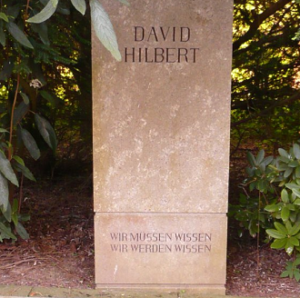 that in his Über die Grenzen des Naturerkennens meaning that in scientific knowledge there was ignorance and the Latin translation is ignored and we will ignore.
that in his Über die Grenzen des Naturerkennens meaning that in scientific knowledge there was ignorance and the Latin translation is ignored and we will ignore.
The first big reaction would come from David Hibert in 1930 when he said: “We need to know and we will know”, said at an annual meeting of the Society of German Scientists and Doctors, but at a round table at a Conference on Epistemology, Kurt Gödel provisionally announced his incompleteness theorem, which showed that elementary axiomatic systems are self-contradictory and contain logical propositions that are impossible to prove or disprove.
At a conference of mathematicians in Paris in 1900 he had announced the famous 23 problems that mathematics was supposed to solve, including the famous incompleteness theorem that would prove that a mathematical system is either complete or open.
However, the biggest problem was closing the questions around mathematical theorems and axioms, and the next big debate is the difference between human and social systems on the one hand, and systems of nature, physical or mathematical on the other.
So if we say that 2 plus 2 is four and this is accurate, it means that we are in the field of mathematics, just as geometric figures can be perfect, no “natural” system is exactly perfect, planets are not exactly round, light and waves Electromagnetic waves do not walk in a straight line in the universe and neither is any natural surface perfectly flat.
What we ignore means that our system of interpretation is limited to certain models and metaphors that do not correspond exactly to nature, and on the social level not only is man extremely complex but the nature that is where the set of human relationships takes place is still more complex, since it is the sum of individual complexities.
The epitaph on the grave of David Hilbert is his famous phrase:
“Wir müssen wissen.
Wir werden wissen ”. (photo above)
Covid 19 in Brazil and the plateau
The analysis based on the number of infected cases is not feasible because testing in Brazil is still small, done by companies or hospitals but only in cases where there is a suspicion of the need for hospitalization, and the estimate that 5% of deaths would correspond to the number of infected is not true because the isolation measures are different in several regions.
testing in Brazil is still small, done by companies or hospitals but only in cases where there is a suspicion of the need for hospitalization, and the estimate that 5% of deaths would correspond to the number of infected is not true because the isolation measures are different in several regions.
The plateau that started from the middle to the end of May has lengthened because the regions with the highest number of infected people were widening and in the case of Brazil going inland, called the epicenter, the name would be inappropriate if there was isolation, thus the contamination spread.
In addition to there being no isolation from the regions where infections started, which has been done in many countries since China where it started and the Wuhan region was epicenter, in this case the name is justified, both local measures and isolation regions were hard to contain the spread.
The second question is how to look at the graph and the numbers, the graph that at the beginning was an exponential and although it is necessary to look at making a logarithmic scale of the curve to see the degree of slope (for example, at the beginning, the number doubled every day and then every other day, etc.), now that the curve no longer has an exponential behavior, it is necessary to make the logarithm.
Looking at the logarithmic scale of the curve, the plateau is clearly perceived (graph above) and the numbers are rotating slightly above the thousand daily cases of death, the degree of infection as already said is not necessary, and thus it is perceived the plateau that has been going on for a month.
The reason was the initial analysis done here, with no isolation from the regions, the virus spread to more inland regions and the new “epicenter” is the interior of the country, and so it should continue into the month of July, either because of the ineffectiveness of isolation policies , or for the winter period
Hermeneutics and spirituality
The fundamental reason for hermeneutics is from the beginning to resolve the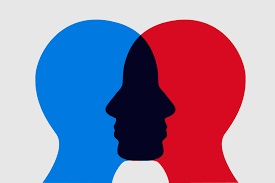 question of the relationship between people and objects, whether they are real or immaterial (virtual is something else), and as these relate to our mental world, I say subjective by idealists, but linked to them.
question of the relationship between people and objects, whether they are real or immaterial (virtual is something else), and as these relate to our mental world, I say subjective by idealists, but linked to them.
If originally the idea of intersubjectivity arises, through dialogue and proximity to idealism, what contemporary philosophy will recover is being-for-Outrem, or Empathy, and here it is not a question of cordial or generous relations, but what comes of philosophical hermeneutics, such as the merging of horizons, and in this empathy can be put as having something “spiritual”.
Not by chance Edith Stein, one of Husserl’s disciples, who was even his secretary, had empathy before her religious life (she became a Carmelite sister, even though she was Jewish), but it is not difficult to make a connection between the two moments in Stein’s life.
Edith Stein will reflect that what she calls “the pure me” (or what I prefer the deepest of me) is in line with the Outrem, in three singular ways analyzed by the author: the experience in the field of pure investigation, which is always reports to the two poles of consciousness: subjective (noesis) and objective (noema), in the second it differentiates the phenomenological approach from the empathic act from other approaches made in the empirical field (genetic, psychological, moral, ethical, etc.) and the third despite ability to learn from the experience of others what constitutes the self.
The “I” always recognizes the flow of ipseidade (which is proper, correlated to hecceidade, principle of Duns Scotto) and this leads to otherness (differentiates it from the other). However, if this relationship is seen within the hermeneutic phenomenology, epoché (putting concepts in parentheses) differs from the Cartesian code because it is not about the ego, as it is intuitively possible to understand emphatically the experience of the Other, but not in an original way , and this means Identity.
We would have difficulties to affirm a unity of the Self, of its individuality, if the relations that are called “intersubjective” (I don’t like the name for its idealistic origin), because we cannot identify where the freedom and responsibility of each individual begins and ends.
To look at the other as conscience (which always has the intention directed towards something) means to become aware of me in that aspect towards which conscience is directed, unlike finding the “middle ground”, “the truth”, what happens later Heidegger and Gadamer called it a fusion of horizons, so the dialogue presupposes a philosophical hermeneutics, in the sense of diving into the horizon of others and rediscovering oneself, requiring an epoché.
It is interesting that in the biblical readings Jesus asks the disciples who he was for them*, and they gradually discover him and never fully, Jesus also looks and analyzes each one to form a community with them, some see a unilateral relationship, but it is dialogics.
*Mt 16, 13-14: Jesus asked his disciples: “Who do men say that I am the Son of Man?” They replied, “Some say it is John the Baptist; others that is Elias; still others, that is Jeremiah or one of the prophets”.

